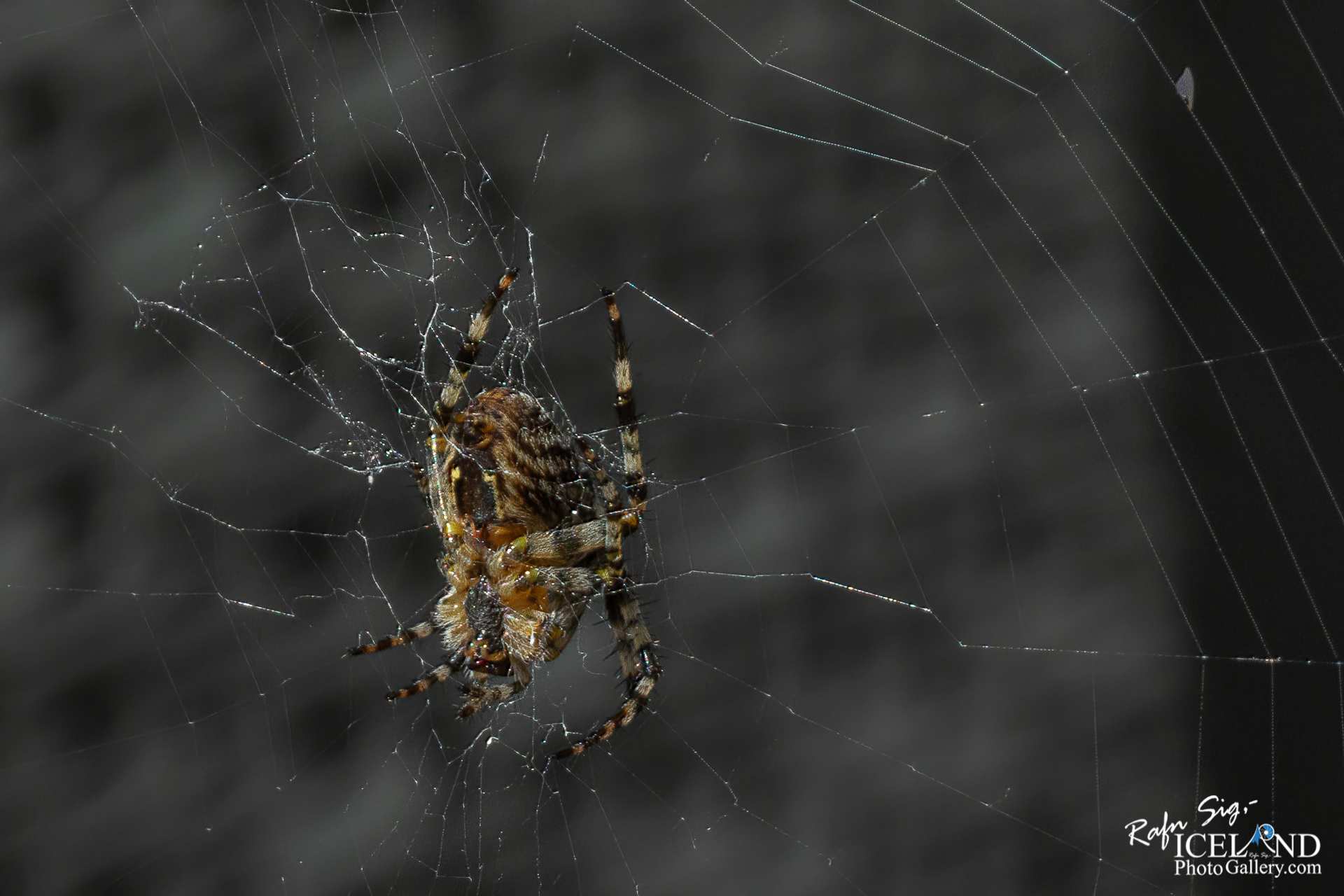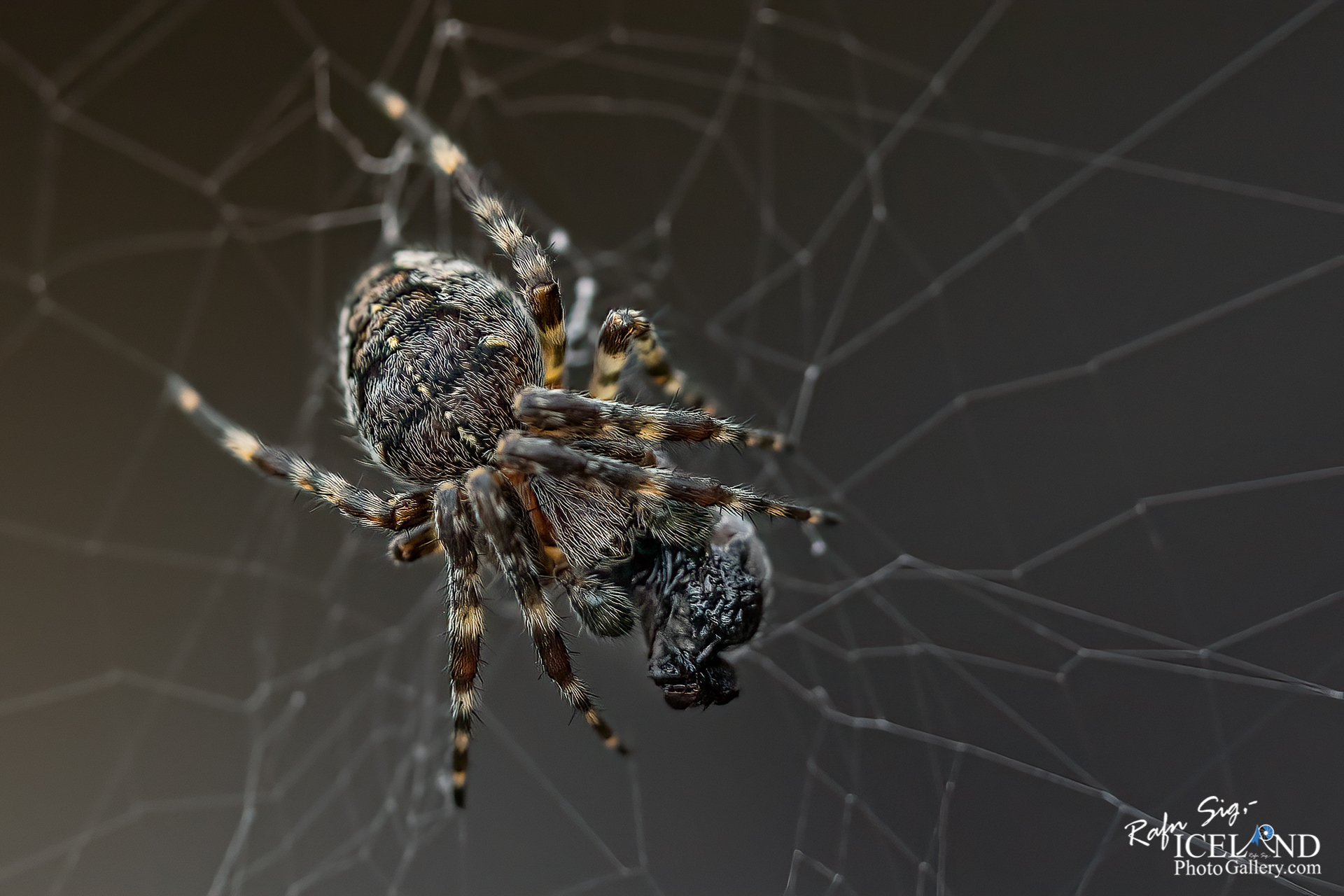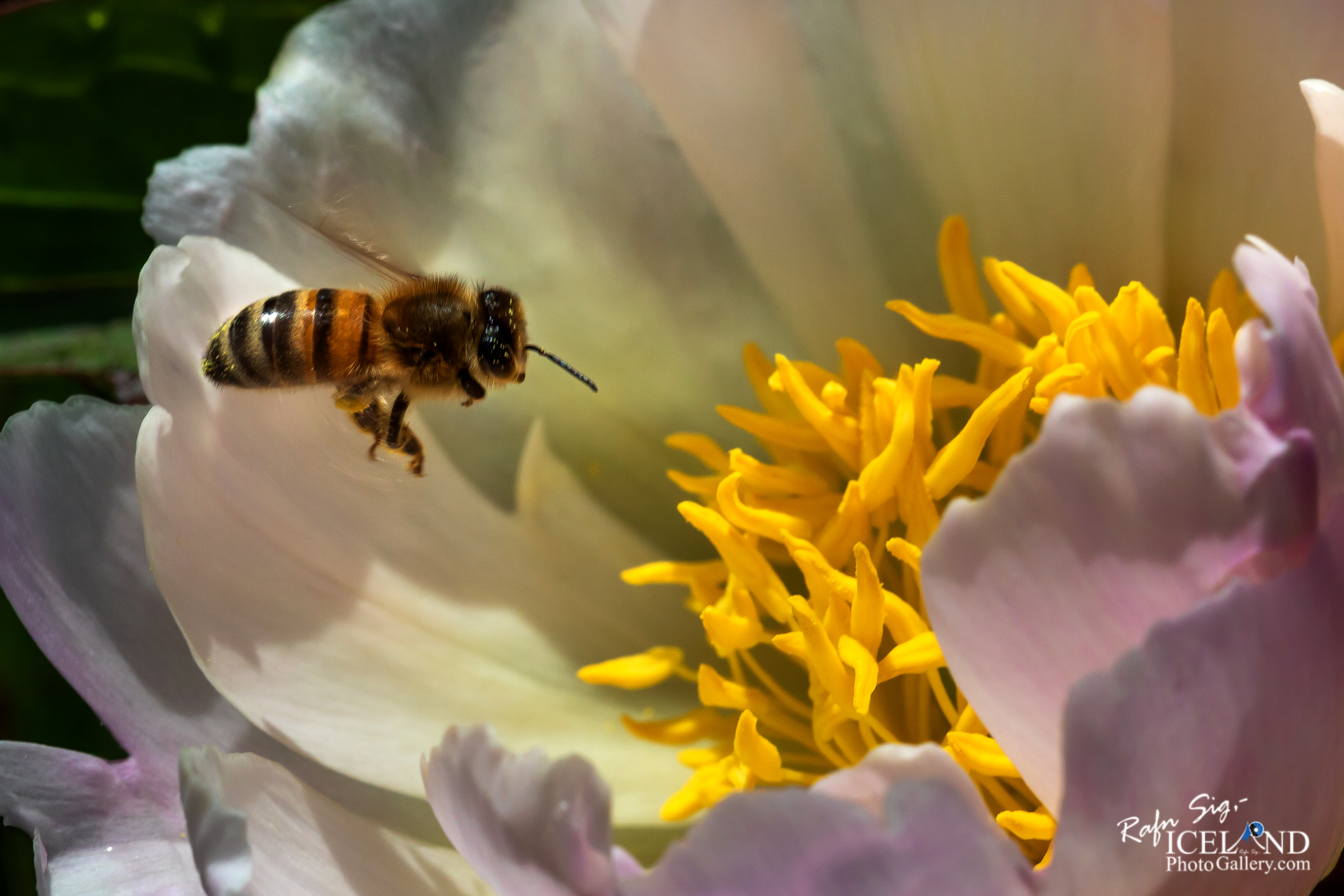2024-08-18
Könguló (Spider) │ Iceland Photo Gallery
Documenting Iceland
by: Rafn Sig,-

Köngulær (Araneae) eru ættbálkur áttfættra, hrygg- og vænglausra dýra sem búa til silki. Allar kóngulær framleiða eitur, nema ein ætt sem kallast netjuköngulær. Margar köngulóategundir veiða með því að búa til vefi eða gildrur til höfuðs skordýrum.
Ólíkt skordýrum, en líkt og aðrar áttfætlur, hafa köngulær tvískiptan búk. Höfuð og frambolur eru samvaxin í það sem kallast höfuðbolur, en ekki aðskilin með skoru eins og hjá skordýrum. Þar eru mikilvæg líffæri, svo sem heilinn. Í afturbolnum er að finna meltingarfærin, öndunarfæri og hjarta og utan á honum er einnig spunavartan.
Köngulær framleiða silki og nota það á margan hátt, meðal annars til að spinna vef sem þær veiða í. Slíkar köngulær kallast vefköngulær. Aðrar köngulær, og vefköngulær margar hverjar reyndar líka, nota hann til að ferðast á milli staða og kallast föruköngulær. Köngulær nota líka silkið til að geyma bráð sína í. Þær vefja bráðina inn í sekk og sprauta svo meltingarensímum inn í hann. Síðan sjúga köngulærnar innan úr sekknum. Köngulóarsilki er með sterkustu efnum í heimi, og hefur tíu sinnum meira togþol en stál.
Spiders (Araneae) are air-breathing arthropods that have eight limbs, chelicerae with fangs generally able to inject venom, and spinnerets that extrude silk. They are the largest order of arachnids and rank seventh in total species diversity among all orders of organisms.
Unlike insects, spiders do not have antennae. In all except the most primitive group, the Mesothelae, spiders have the most centralized nervous systems of all arthropods, as all their ganglia are fused into one mass in the cephalothorax. Unlike most arthropods, spiders have no extensor muscles in their limbs and instead extend them by hydraulic pressure.
To avoid being eaten by the females, which are typically much larger, male spiders identify themselves as potential mates by a variety of complex courtship rituals. Males of most species survive a few matings, limited mainly by their short life spans. Females weave silk egg cases, each of which may contain hundreds of eggs. Females of many species care for their young, for example by carrying them around or by sharing food with them. Although most spiders live for at most two years, tarantulas and other mygalomorph spiders can live up to 25 years in captivity.
Silk is mainly composed of a protein very similar to that used in insect silk. It is initially a liquid, and hardens not by exposure to air but as a result of being drawn out, which changes the internal structure of the protein. It is similar in tensile strength to nylon and biological materials such as chitin, collagen and cellulose, but is much more elastic. In other words, it can stretch much further before breaking or losing shape.
Females lay up to 3,000 eggs in one or more silk egg sacs, which maintain a fairly constant humidity level. In some species, the females die afterwards, but females of other species protect the sacs by attaching them to their webs, hiding them in nests, carrying them in the chelicerae or attaching them to the spinnerets and dragging them along. . . . . All info at: https://www.patreon.com/RafnSig
Welcome to my Spotify page - Cinematic Instrumental Music
Playlist No 1 - Cinematic Instrumental Music
Playlist No 2 - Cinematic Music for Videos & Films
Playlist No 3 - Cinematic Emotional Background Music
– 0 –
Viltu styrkja þessa síðu?
Vefsíðan Iceland Photo Gallery er unnin í sjálfboðavinnu. Ef þú hefur áhuga á að styrkja þetta framtak til áframhaldandi uppbyggingar er hægt að leggja inn á:
Reikningsnr.: 0101-26-013169
Kennitala: 310155-4469







